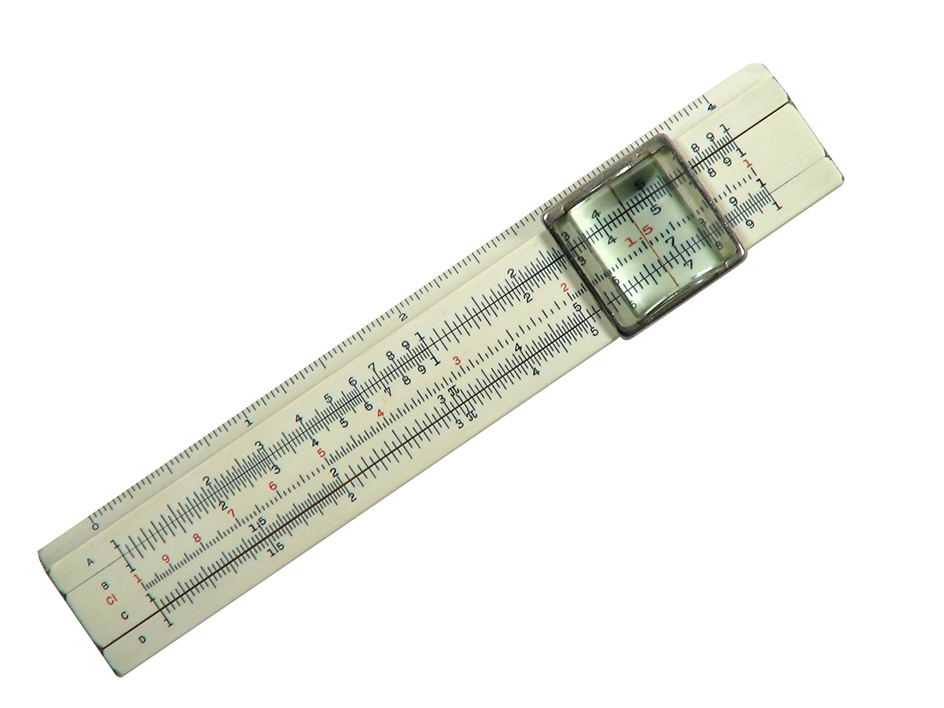Slide rule is a device used to perform mathematical calculations. These calculations include multiplication and division, squaring and cubing, determining square roots and cube roots, raising numbers to any power, and calculating trigonometric functions (see Trigonometry ). Slide rules are generally not used for addition or subtraction.

Most slide rules consist of multiple number lines called scales. On a slide rule, some scales move and others are fixed. Most slide rules are rectangular, but some are circular or cylindrical.
To perform a mathematical calculation, the user slides the movable scale and matches a numbered mark on it with a numbered mark on the fixed scale. The user then looks at the relative locations of other numbered marks on the scales to get the result of the calculation. Many slide rules have a movable window with a line etched on it. This line, called the cursor, makes it easier to read the numbers associated with the marks.
In the 1620’s, the English mathematician William Oughtred invented an early slide rule. Oughtred’s device used sliding logarithmic scales of numbers to quickly estimate the results of complicated multiplication calculations. A logarithmic scale proceeds according to the logarithm of a number. A number’s logarithm is the number of times some base number, such as 10, must be multiplied by itself to produce the number (see Logarithms ).
After Oughtred’s discovery, mathematicians constructed slide rules that could be used for various mathematical operations. In 1851, Amedee Mannheim, a French artillery officer, invented the basic design that would be used for many years. Slide rules were mainly used by scientists and engineers to perform routine calculations. In the 1970’s, slide rules were replaced by handheld electronic calculators, which perform mathematical calculations more quickly and precisely.
